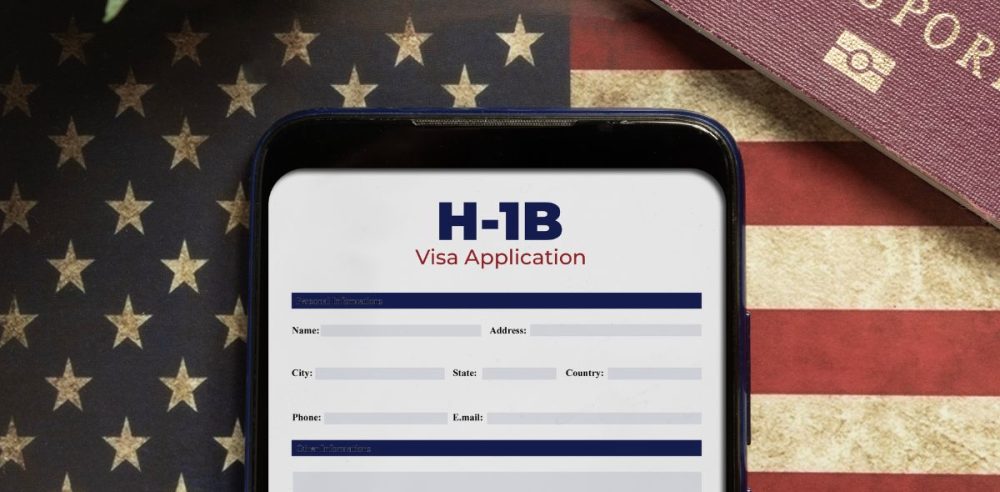America’s largest private and public financial institutions appear to be using H-1B labor.
JP Morgan Chase, Fidelity Investments, and their related corporate networks employed 1800 H-1B workers, the U.S. Citizenship and Immigration Services (USCIS) H-1B Employer Data Hub for 2024 reveals.
The data hub also shows that Goldman Sachs and Citigroup’s corporate networks employed around 1,400 foreign workers each.
These were not the only institutions in their industry to employ a substantial number of foreign workers. The approximate H-1B labor usage at other institutions was reported as follows: Morgan Stanley (650), Bank of America (500), Wells Fargo (450), and AIG (50).
According to government records, BlackRock’s vast corporate network employs over 350 H-1B workers. Even institutions with the backing of the federal government utilized foreign labor.
Fannie Mae employed around 30 H-1B workers, while Freddie Mac had 10 and the Federal Reserve 25, according to the USCIS H-1B Employer Data Hub. The Federal Reserve figures included at least one employee at the Federal Reserve Bank of Dallas.
Seven H-1B applications have been filed for research economist and economic software developer roles by the Federal Reserve Bank of Dallas in the last six years, according to the H-1B Salary Database. The reported pay for these roles showed that taxpayers could be on the hook for between $80,000 and $130,000, depending on which job was set to be filled with foreign labor.
A check of the records for Fidelity and BlackRock demonstrates the type of roles each private sector institution sought to fill.
The H-1 B Salary Database showed that Fidelity filed numerous applications for business analysis roles, while BlackRock sought everything from low-level analysts to vice presidents.
It is unclear what made the importation of labor for government research economists, early career analysis, and similar entry-level roles necessary.
The Department of Labor indicates that the purpose of the H-1B program is to help employers who cannot find native-born American workers with a specialized skill set.
“The intent of the H-1B provisions is to help employers who cannot otherwise obtain needed business skills and abilities from the U.S. workforce by authorizing the temporary employment of qualified individuals who are not otherwise authorized to work in the United States,” reads the government agency website.
Meanwhile, Texas is home to numerous graduate economics programs, including the Department of Economics at the University of Texas at Austin, the Department of Economics at Texas A&M University, the Jones Graduate School of Business at Rice University, the Hankamer School of Business at Baylor University, and many others across public and private institutions.
Likewise, the Lone Star State boasts several collegiate business schools, including the McCombs School of Business at the University of Texas at Austin, the Mays Business School at Texas A&M University, the Neeley School of Business at Texas Christian University, and others across public and private institutions.
Around 85,000 H-1B visas are issued each year, and each lasts for 6 years of employment.
Indian and Chinese nationals receive the most H-1B visas of any country’s workers. USCIS data reveals that during fiscal year 2023, 72% of H-1B visas were issued to Indian nationals, while 12% went to Chinese nationals.
H-1B visas can open the country to more than just the visa holder; often, the employee’s entire family can follow the worker into the United States on H-4 visas. Dependent spouses on H-4 visas can apply with USCIS for employment in the U.S., and if approved, they, too, can work in Texas.
H-4 visa children can attend public schools. In some cases, H-4 holders may also qualify for other social services, such as unemployment benefits, according to the law firm Reddy Neuman Brown PC’s legal blog.
The Dallas Express calculated each institution’s H-1B usage by aggregating and tabulating the various institutions in the same networks filing with USCIS under similar names.
In most cases, organizations operating under the same parent company name would have different profiles despite being closely related. For example, Blackrock Financial Management Inc. would be listed as a different USCIS profile than Blackrock Investment Management LLC.
In other cases, simple variations in names such as “JPMorgan Chase and Co” and “JPMorgan Chase Co” would lead to separate company profiles, despite each profile being for the same company.
If corporate networks are considered, the big banks make up four of the tech-dominated top 30 users of H-1B visas reported by USCIS. Without considering corporate networks and the slight variations in nomenclature, there is just one big bank in the top 30 of USCIS’s chart.
This revelation comes as a national debate has been held about the H-1B visa program, which has almost entirely focused on the tech sector.
The Dallas Express previously reported that almost 10% of Tesla’s Texas-based labor force holds an H-1B visa.
Proponents of the program say it is necessary to supplement alleged deficits in America’s native-born workforce. At the same time, opponents argue that it is wrought with fraud and abuse, as DX reported.
The Federal Reserve Bank of Dallas, Fidelity, and BlackRock were contacted in the production of the story but did not respond by the time of publication.


